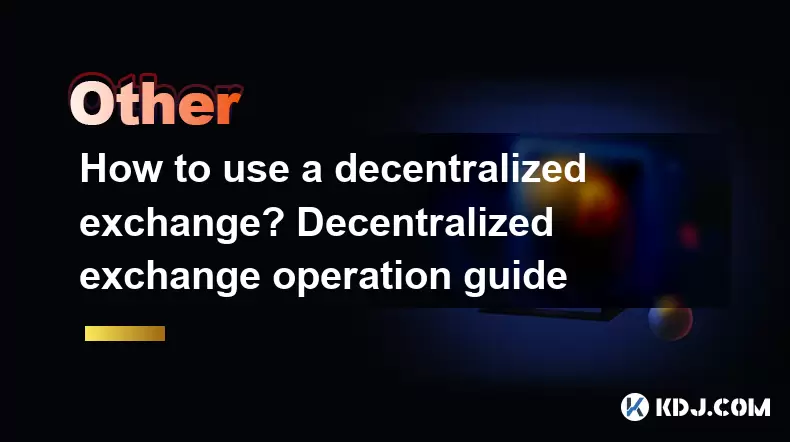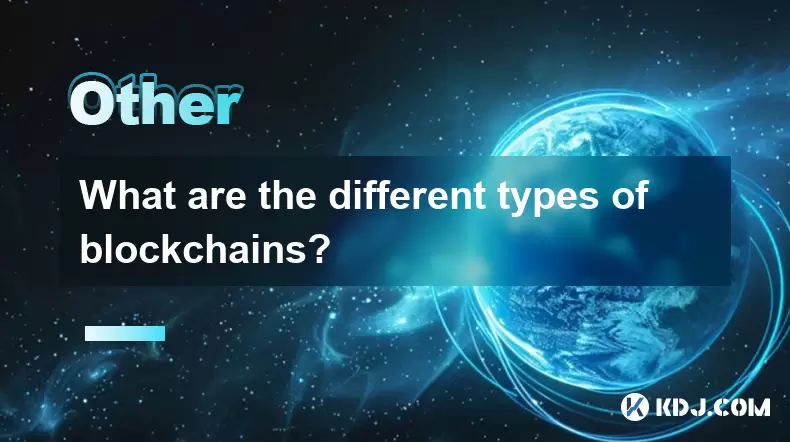-
 Bitcoin
Bitcoin $112700
-0.57% -
 Ethereum
Ethereum $3409
-3.35% -
 XRP
XRP $2.800
-6.95% -
 Tether USDt
Tether USDt $0.9998
0.05% -
 BNB
BNB $741.2
-2.50% -
 Solana
Solana $158.2
-4.71% -
 USDC
USDC $0.9999
0.02% -
 TRON
TRON $0.3220
-1.23% -
 Dogecoin
Dogecoin $0.1937
-6.71% -
 Cardano
Cardano $0.6987
-4.25% -
 Hyperliquid
Hyperliquid $36.60
-1.92% -
 Sui
Sui $3.336
-6.21% -
 Stellar
Stellar $0.3689
-6.39% -
 Chainlink
Chainlink $15.71
-3.85% -
 Bitcoin Cash
Bitcoin Cash $527.4
-2.19% -
 Hedera
Hedera $0.2295
-7.74% -
 Avalanche
Avalanche $21.05
-3.87% -
 Ethena USDe
Ethena USDe $1.001
0.02% -
 Toncoin
Toncoin $3.539
-1.75% -
 UNUS SED LEO
UNUS SED LEO $8.964
0.14% -
 Litecoin
Litecoin $105.8
-0.13% -
 Shiba Inu
Shiba Inu $0.00001184
-3.50% -
 Polkadot
Polkadot $3.501
-3.07% -
 Uniswap
Uniswap $8.831
-2.88% -
 Dai
Dai $1.000
0.03% -
 Monero
Monero $290.4
-3.99% -
 Bitget Token
Bitget Token $4.242
-1.47% -
 Pepe
Pepe $0.00001009
-5.08% -
 Cronos
Cronos $0.1253
-6.28% -
 Aave
Aave $249.9
-3.27%
How to use a decentralized exchange? Decentralized exchange operation guide
A decentralized exchange (DEX) allows peer-to-peer cryptocurrency trading via smart contracts, offering users full control over their funds and enhanced security compared to centralized platforms.
Jun 15, 2025 at 08:49 am

What Is a Decentralized Exchange (DEX)?
A decentralized exchange, commonly referred to as a DEX, is a type of cryptocurrency trading platform that operates without a central authority. Unlike traditional centralized exchanges, DEXs allow users to trade directly from their wallets using smart contracts on blockchain networks like Ethereum, Binance Smart Chain, and others.
One key feature of decentralized exchanges is that they do not hold users' funds. Instead, trades are executed peer-to-peer or via automated market makers (AMMs), which use liquidity pools to facilitate transactions. This ensures greater security and control for users over their assets.
If you're new to the concept, it's important to understand that using a DEX requires a compatible crypto wallet, such as MetaMask, Trust Wallet, or WalletConnect. These tools interact directly with the blockchain and the DEX interface to enable seamless trading.
Setting Up Your Wallet for a DEX
Before accessing any decentralized exchange, you must set up a non-custodial wallet. This means you retain full control over your private keys, and no third party can access your funds.
- Download and install a trusted wallet like MetaMask.
- Create a new wallet and securely store your 12-word recovery phrase in a safe location.
- Connect your wallet to the DEX by clicking the “Connect Wallet” button typically found in the upper right corner of the DEX interface.
- Select your wallet provider from the list (e.g., MetaMask, WalletConnect).
- Confirm the connection through your wallet extension or mobile app.
Once connected, your wallet will show your current token balances and allow interaction with the DEX’s features, including swapping tokens, providing liquidity, or staking.
Swapping Tokens on a DEX
Token swapping is one of the most common activities performed on a decentralized exchange. Here’s how you can do it:
- Navigate to the Swap section of the DEX interface.
- Select the token you want to swap from your wallet.
- Choose the token you wish to receive in return.
- Enter the amount you’d like to trade or select Max to use your entire balance.
- Review the transaction details, including slippage tolerance, gas fees, and estimated output.
- Click Swap and confirm the transaction in your wallet.
- Wait for the blockchain confirmation, which may take a few seconds to minutes depending on network congestion.
Some DEXs offer multi-chain support, allowing you to bridge tokens between different blockchains. Always ensure that you’re interacting with the correct chain and contract address to avoid irreversible losses.
Providing Liquidity on a DEX
Many DEXs rely on liquidity pools maintained by users who deposit equal value of two tokens. In return, liquidity providers (LPs) earn a share of trading fees generated by the pool.
To become a liquidity provider:
- Go to the Liquidity or Pool section of the DEX.
- Select the token pair you want to contribute (e.g., ETH/DAI).
- Enter the amounts of both tokens you'd like to add.
- Approve each token if this is your first time depositing them.
- Confirm the transaction and wait for it to be processed.
- You’ll receive LP tokens representing your share of the pool, which can sometimes be staked elsewhere for additional rewards.
Keep in mind that impermanent loss is a risk when providing liquidity, especially in volatile markets. It occurs when the price of deposited tokens changes compared to when they were added to the pool.
Understanding Gas Fees and Network Selection
Gas fees are an essential part of using decentralized exchanges, as they are paid to miners or validators for processing transactions on the blockchain.
- Before initiating any action on a DEX, check the gas fee estimate provided by your wallet.
- You can often adjust the gas price manually to prioritize speed or cost-efficiency.
- Be cautious during times of high network congestion, as gas fees can spike dramatically.
- Ensure you’re using the correct network (e.g., Ethereum Mainnet, Binance Smart Chain, Polygon) within your wallet before connecting to a DEX.
Switching networks incorrectly can result in lost funds or failed transactions. Always double-check the contract address and token standards (like ERC-20 or BEP-20) when interacting with unfamiliar tokens.
Frequently Asked Questions
Q: Can I lose money using a decentralized exchange?
Yes, there are risks involved, including smart contract vulnerabilities, phishing scams, and impermanent loss when providing liquidity. Always research projects thoroughly before interacting with them.
Q: Are all tokens on a DEX trustworthy?
No. Since DEXs are permissionless, anyone can list a token. This makes them susceptible to scams and fake tokens. Always verify the token address and project legitimacy before proceeding.
Q: Why does my transaction keep failing on a DEX?
This could be due to insufficient gas fees, slippage settings too low, or incorrect token approvals. Check your wallet notifications and try adjusting these parameters accordingly.
Q: How do I recover funds sent to the wrong address on a DEX?
Unfortunately, blockchain transactions are irreversible. If you send tokens to the wrong address or contract, recovery is typically not possible unless the recipient voluntarily returns them.
Disclaimer:info@kdj.com
The information provided is not trading advice. kdj.com does not assume any responsibility for any investments made based on the information provided in this article. Cryptocurrencies are highly volatile and it is highly recommended that you invest with caution after thorough research!
If you believe that the content used on this website infringes your copyright, please contact us immediately (info@kdj.com) and we will delete it promptly.
- Ruvi AI: The Millionaire Maker with a Price Spike on the Horizon?
- 2025-08-03 02:50:12
- DOGE, Utility Coins, and Smart Money: A New Era for Crypto Investing?
- 2025-08-03 02:50:12
- Punisher Coin: Is This Meme Coin the Crypto Investment with 100x ROI Potential?
- 2025-08-03 03:30:12
- Ruvi AI, XRP, and CoinMarketCap: Decoding the Crypto Buzz
- 2025-08-03 03:30:12
- Solana, WeWake, and Presales: What's Hot in the Crypto Space?
- 2025-08-03 03:35:25
- MoonBull, LOFI Pepe: Navigating the Meme Coin Mania and the Best Crypto Whitelist
- 2025-08-03 04:10:12
Related knowledge

What is the difference between on-chain and off-chain transactions?
Aug 02,2025 at 04:22pm
Understanding On-Chain TransactionsOn-chain transactions refer to digital asset transfers that are recorded directly on a blockchain ledger. These tra...

What is the double-spending problem and how does blockchain prevent it?
Aug 02,2025 at 01:07pm
Understanding the Double-Spending ProblemThe double-spending problem is a fundamental challenge in digital currency systems where the same digital tok...

What is the difference between a blockchain and a database?
Aug 01,2025 at 09:36pm
Understanding the Core Structure of a BlockchainA blockchain is a decentralized digital ledger that records data in a series of immutable blocks linke...

How does blockchain handle scalability?
Aug 02,2025 at 02:58pm
Understanding Blockchain Scalability ChallengesBlockchain scalability refers to a network's ability to handle an increasing volume of transactions wit...

What are the different types of blockchains?
Aug 03,2025 at 03:01am
Public Blockchains: Open and Decentralized NetworksPublic blockchains are the most widely recognized type of blockchain, characterized by their open a...

What is a hash in a blockchain?
Aug 02,2025 at 05:28am
Understanding the Concept of Hash in BlockchainA hash in the context of blockchain technology refers to a unique digital fingerprint generated by a cr...

What is the difference between on-chain and off-chain transactions?
Aug 02,2025 at 04:22pm
Understanding On-Chain TransactionsOn-chain transactions refer to digital asset transfers that are recorded directly on a blockchain ledger. These tra...

What is the double-spending problem and how does blockchain prevent it?
Aug 02,2025 at 01:07pm
Understanding the Double-Spending ProblemThe double-spending problem is a fundamental challenge in digital currency systems where the same digital tok...

What is the difference between a blockchain and a database?
Aug 01,2025 at 09:36pm
Understanding the Core Structure of a BlockchainA blockchain is a decentralized digital ledger that records data in a series of immutable blocks linke...

How does blockchain handle scalability?
Aug 02,2025 at 02:58pm
Understanding Blockchain Scalability ChallengesBlockchain scalability refers to a network's ability to handle an increasing volume of transactions wit...

What are the different types of blockchains?
Aug 03,2025 at 03:01am
Public Blockchains: Open and Decentralized NetworksPublic blockchains are the most widely recognized type of blockchain, characterized by their open a...

What is a hash in a blockchain?
Aug 02,2025 at 05:28am
Understanding the Concept of Hash in BlockchainA hash in the context of blockchain technology refers to a unique digital fingerprint generated by a cr...
See all articles

























































































